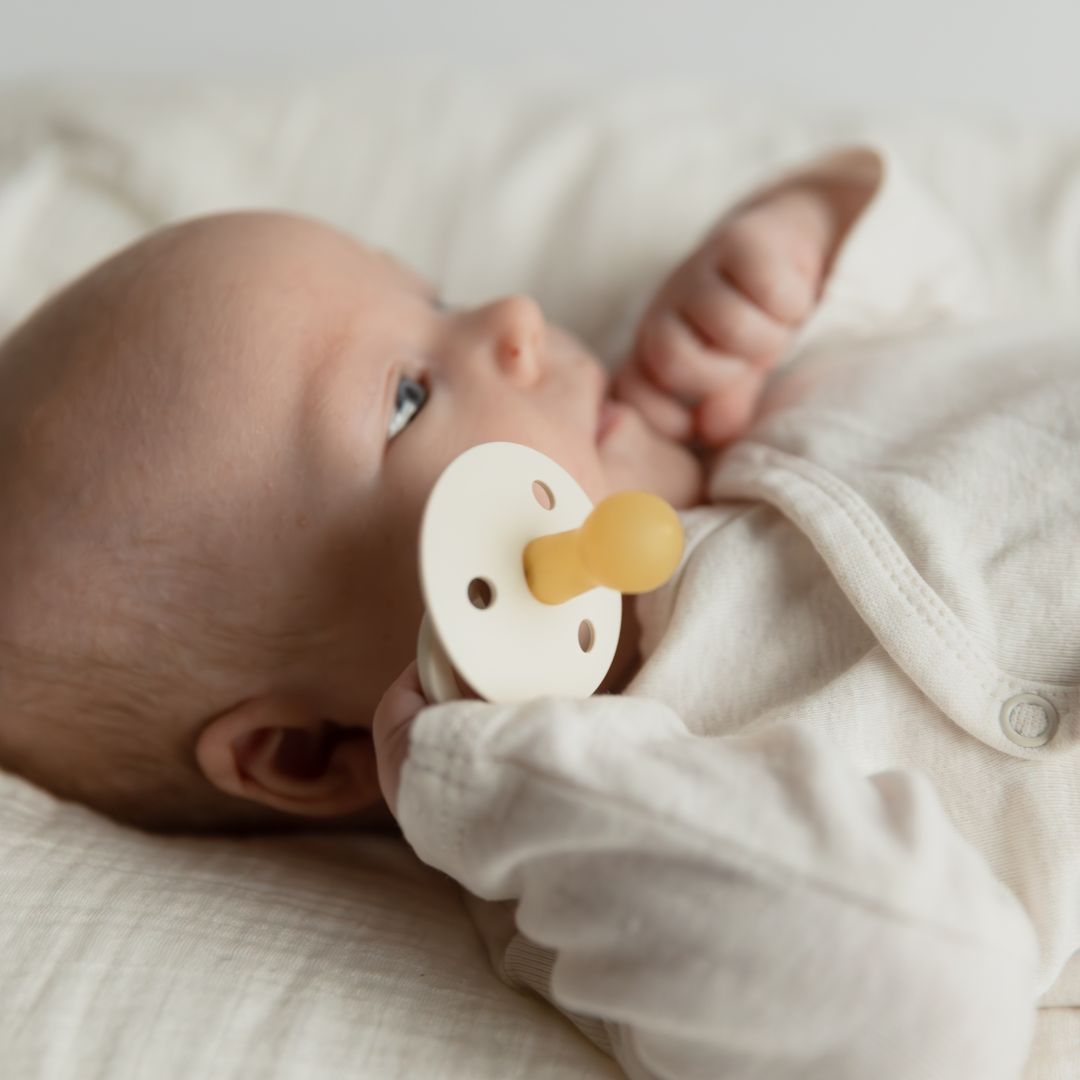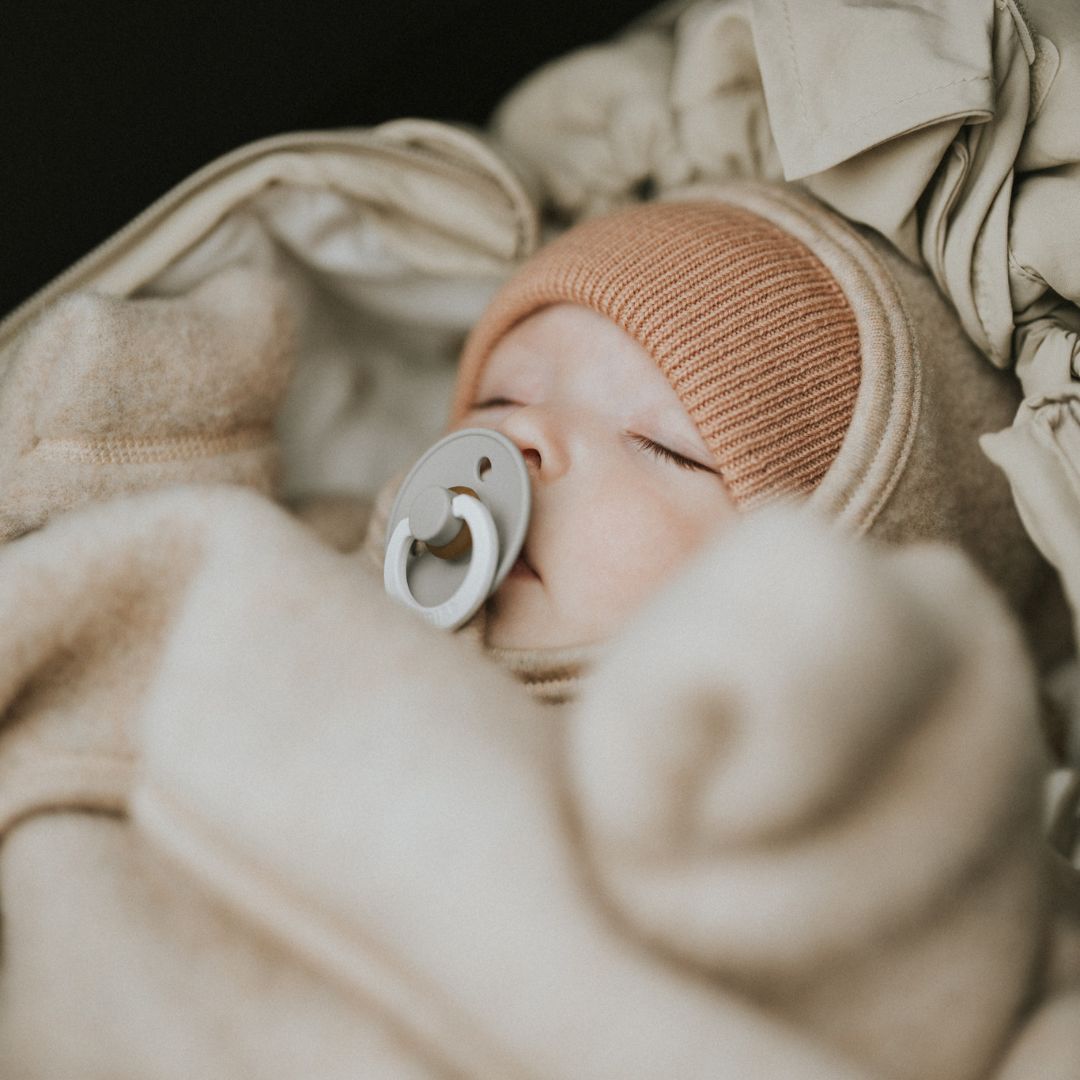Writing an article about how to change a nappy may seem banal to most but there are a few tips and tricks that can be very useful when applied.
Before starting, you should as always prepare the nappy changing space. This not only makes it a more relaxed experience but also safer. The easiest thing would be changing the nappy on a fully set changing table. If you do so you should still make sure, you lay everything onto the changing space beforehand, so you will not have to search in any draws when needing something. Another option would be to have a portable changing mat, which you can take wherever you go. It should be soft and thick enough to maintain warmth if laid on a cold floor. Another good feature to have is a water repellent coating, so you won’t have to carry a wet mat around if urine or stool gets onto it. Ideally one should buy a mat which has integrated pockets so that one can put nappy changing essentials‘ such as diapers and wipes into it.

Mushie changing mat.
Make sure to set 2-3 nappies aside every time you change the nappy. It often happens that newborns and babies pass urine or stool whilst one is changing their nappy. So to be prepared one should have more than one nappy within reach. Depending on what you prefer, baby wipes or luke-warm water and a cloth are needed for cleaning baby´s body. Don´t forget the skin care products if necessary. Ideally one has also a warming lamp, especially for the first few months after birth, since newborns cool down quickly.
When everything is prepared take your baby, lay it onto your changing spot and undress the lower body. Unbutton the baby’s body and fold it over the baby’s arms - this enables the newborn to feel protected and enables it to feel more relaxed. For bigger babies or infants this will help to keep their hands out of the nappy area. If the baby is not wearing a body, take a muslin and fold it, so that you will be able to wrap it around the baby’s upper body leaving out the lower part. This again enables the baby to feel more relaxed and protected. Undress the lower body as far as needed, so that you will be able to slip the nappy under the baby’s bottom without having to adjust its clothes - this makes it a smoother process and more pleasant for the newborn, since you won’t have to fiddle around as much. Unfold a new nappy and make sure you have it the right way around (sticky strips on the back), slip it underneath the baby’s bottom before opening the old nappy - this will make the change from an old to the new nappy smoother and if the baby passes urine or stool whilst changing the content, it will be caught.
Did you know?
It is an outdated habit to lift the baby’s legs for changing since a newborn’s hips are not fully matured and are sensitive to external influences. (1) By lifting the legs, one promotes the wrong posture due to the still maturing acetabulum, which doesn’t enclose the hip joints fully. There are two ways to support the still maturing acetabulum and hips. The first is to support and promote the newborn’s body perception, as well as physical development by using the kinaesthetic technique. One begins by lightly turning the baby to the side with the non-dominant hand, supporting the bottom, back and head with the underarm. With further development, the baby will follow the movement with its head by itself. Then one holds the baby in this position, preventing it to turn back. The next step would be to slip a new nappy next to the back with ones free hand, making sure it is in the right position and then slowly turning the baby onto its back. Now one can open the nappy making sure that the sticky strips are folded together thus preventing them from sticking to the baby’s skin.

Mother changing the diaper.
Make sure to fold the nappy’s sticky strips together. This prevents them from sticking to the baby’s skin and then tucking the upper part of the nappy under the bottom to clean the genital area. Always wipe from front to back, using the clean part of the wipe for each motion, this prevents bacteria entering the opening of the vagina or urethra.
Girls and boys are different. Due to the female anatomy, the urethra and vagina are quite exposed to the bacteria of stool in the nappy. There are, of course, the body’s own mechanisms, which are meant to prevent stool bacteria from colonising the urethra and vagina. However, one should still make sure to keep good hygiene. That is the reason why one should always use a clean part of the wipe for each motion. Also due to hormonal changes, the outer labia, as well as, the clitoris can be swollen for some time after birth. One should make sure to clean the genital area gently and with luke-warm water to ease any irritation. It is also recommended not to forget to clean between the outer and inner labia, if stool has been passed since these are also creases and have to be cleaned. To reach the creases one should gently spread the labia apart with two fingers, again cleaning from front to back. The opening of the vagina only has to be cleaned if there is stool on it. One does not have to clean inside!
The male anatomy protects the urethra a little better due to the foreskin. Despite this one should still keep the motion front to back in mind. It is also very important not to pull back the foreskin due to its very delicate tissue, which can easily be harmed even without one noticing. However it is necessary to clean between the penis and the testicles, as well as under the scrotum. When cleaning underneath one should also make sure not to grab the scrotum too hard since one does not want to damage the testicles.
After cleaning the genitals, one turns the baby slightly to the other side, so that one’s non-dominant hand, which did not have any contact with the nappy area, holds the baby safely, whilst the dominant hand can now take away the old nappy and clean the bottom. After everything is nice and clean, one should also make sure all the skin’s creases and folds are dry. One can do this by either taping the area dry with a cloth or letting the baby have some minutes of nappy free time.

An example of a changing corner.
Cover the penis with a cloth if you decide to have some nappy free time. It often happens that baby boys pass urine when the nappy is open. The other option would be to take your non-dominant hand and softly grab the thigh of the baby’s leg nearest to your thumb. The other leg will be resting on your non-dominant underarm. Then you will be able to rotate the baby to the side with the motion of your non-dominant hand. This rotation is just light, so that the baby’s spine and head are still in line with the bottom. The dominant hand can now clean as explained above. If you have a boy, make sure that the penis is turned downwards before shutting the nappy. This will prevent leaking. If your newborn still has its umbilical cord stump or the diaper seams too big, make sure to fold the upper part of the nappy inwards, which again prevents leaking. Nappies are manufactured, so that even a large amount of water can be absorbed. If the direct suction surface is full, the fluid flows to the next area, where it will be absorbed. If you fold the nappy the wrong way around and your baby passes a lot of stool or urine, the next area may be the part folded over and it will leak onto the baby’s clothes and skin.
Make sure to tuck out the ribbons, which are located at the baby’s legs. These are also designed to prevent leaks. To make sure that the nappy fits well but isn’t too tight, one should be able to slip two fingers into the waistband. The correct nappy size should be used. Firstly, to make it more comfortable for the baby and secondly, to prevent leakage. Ideally, one should buy skin friendly nappies, without perfume, parabens and PEG emulsifiers. After re-dressing the baby and laying it somewhere safe, one should pursue proper hand hygiene. Please remember not to touch the baby’s face during a nappy change.
Important
Please note - never leave your baby untended & always have one hand on the baby, whilst it is laying on the changing table!
Additional Sources
1. Kinästhetik Infant Handling - Aus der Rücken- in die Seitenlage





